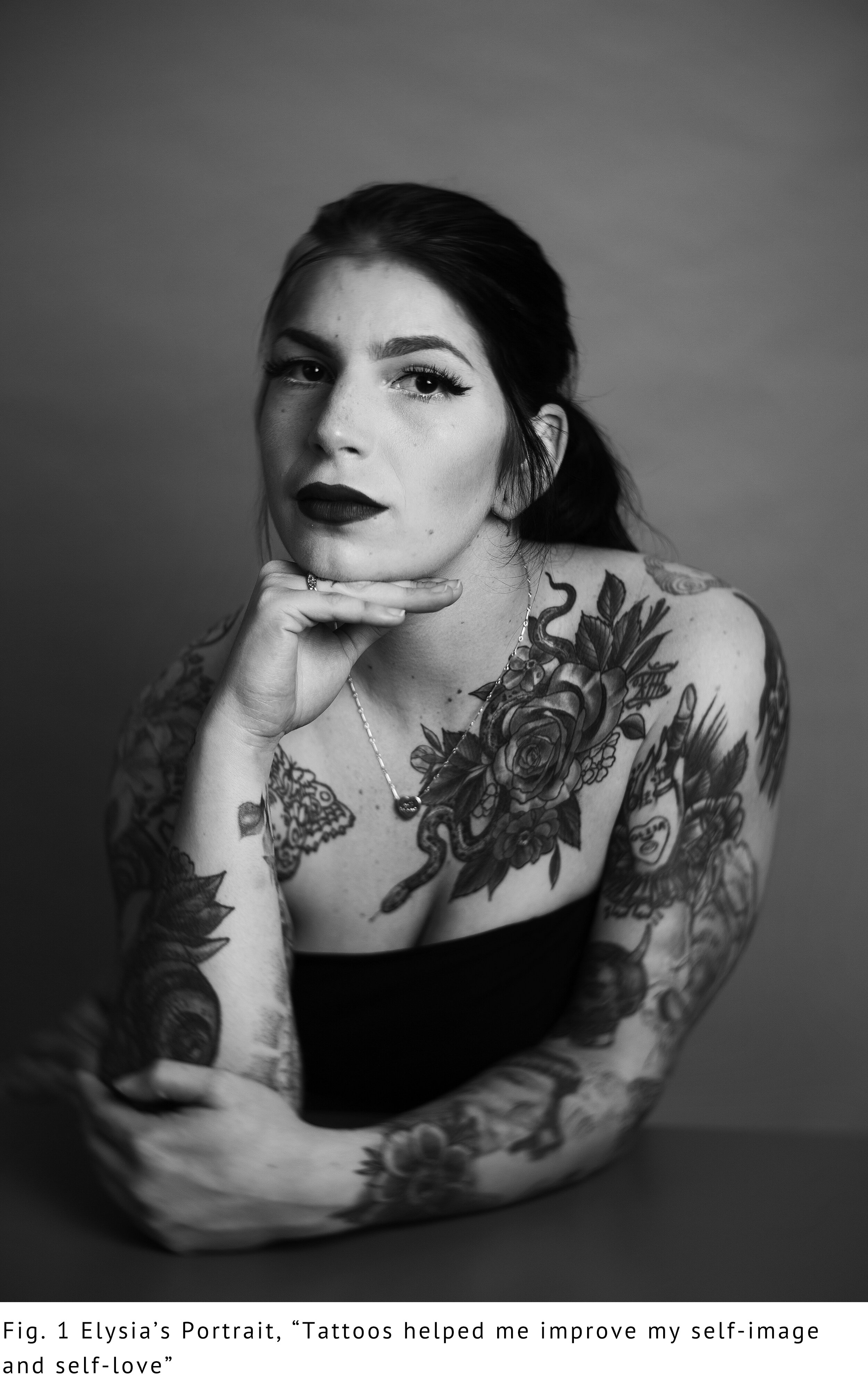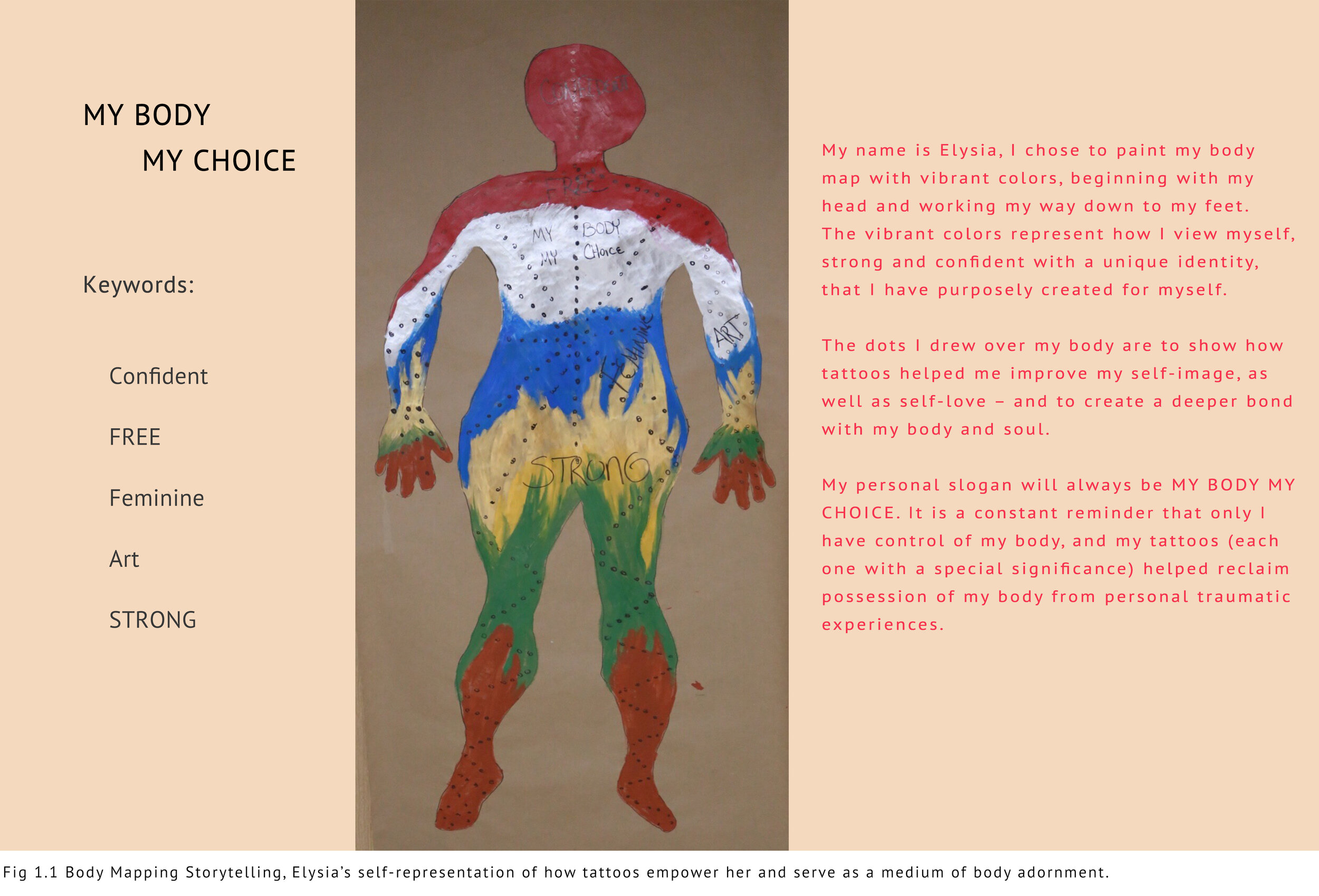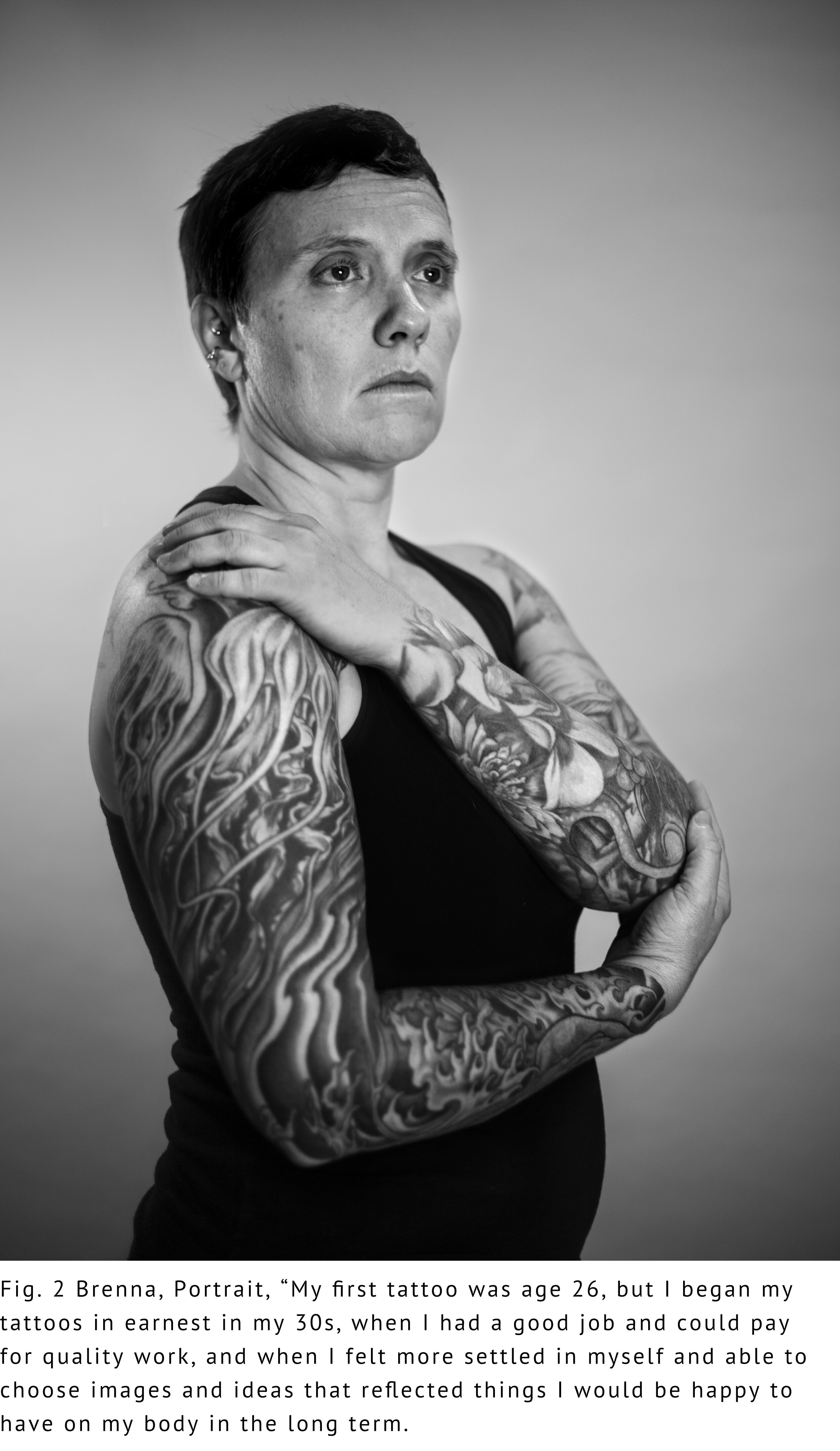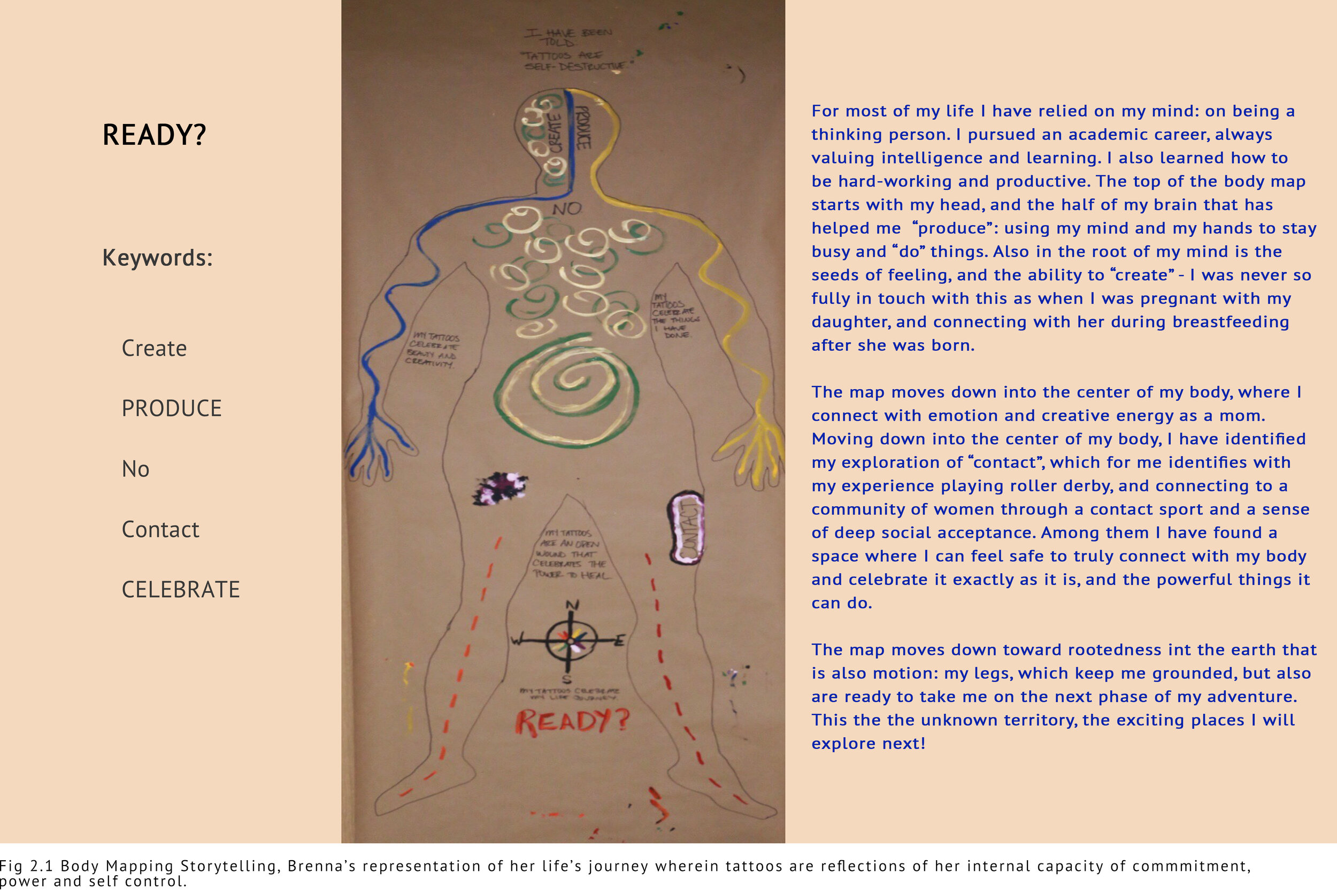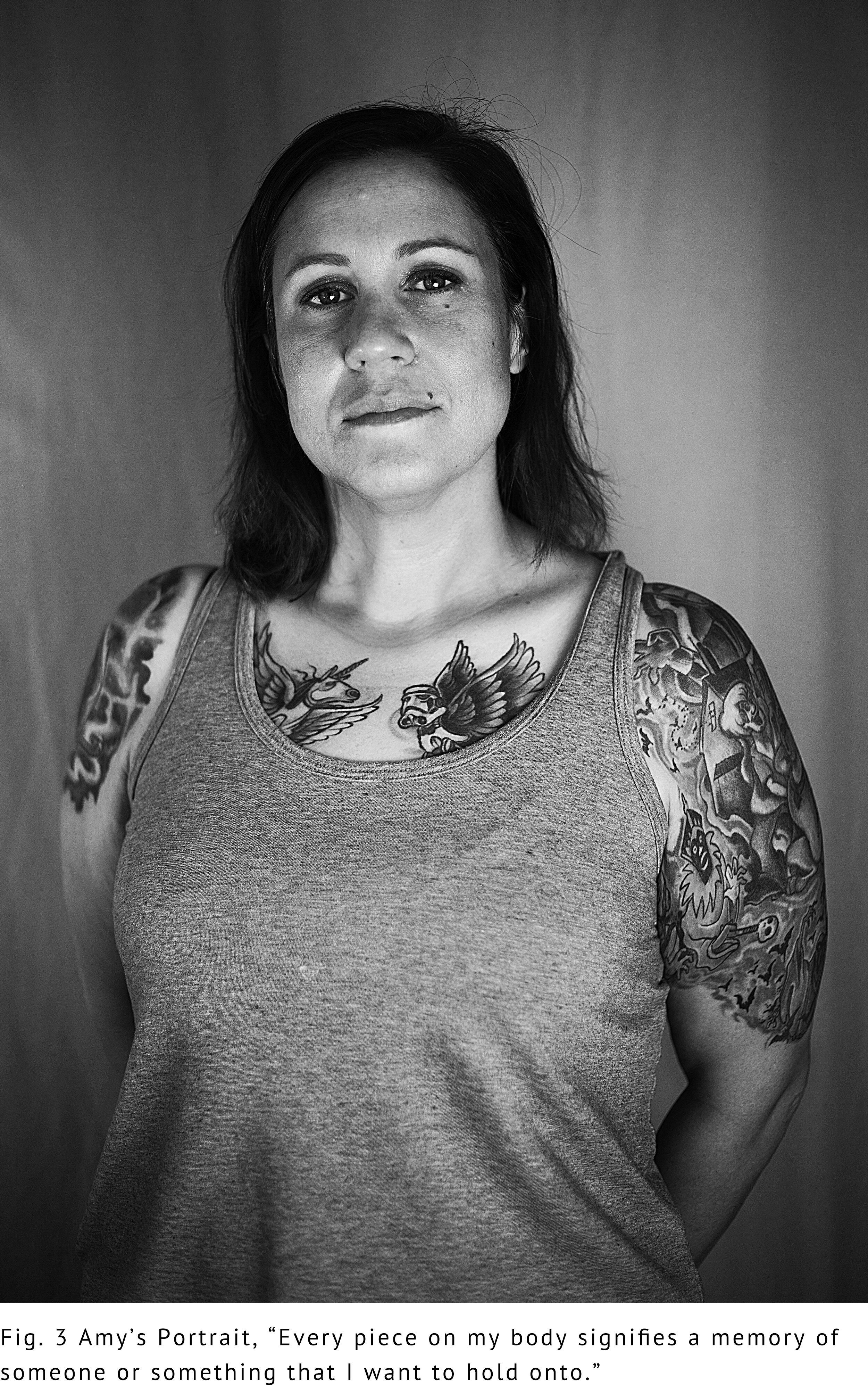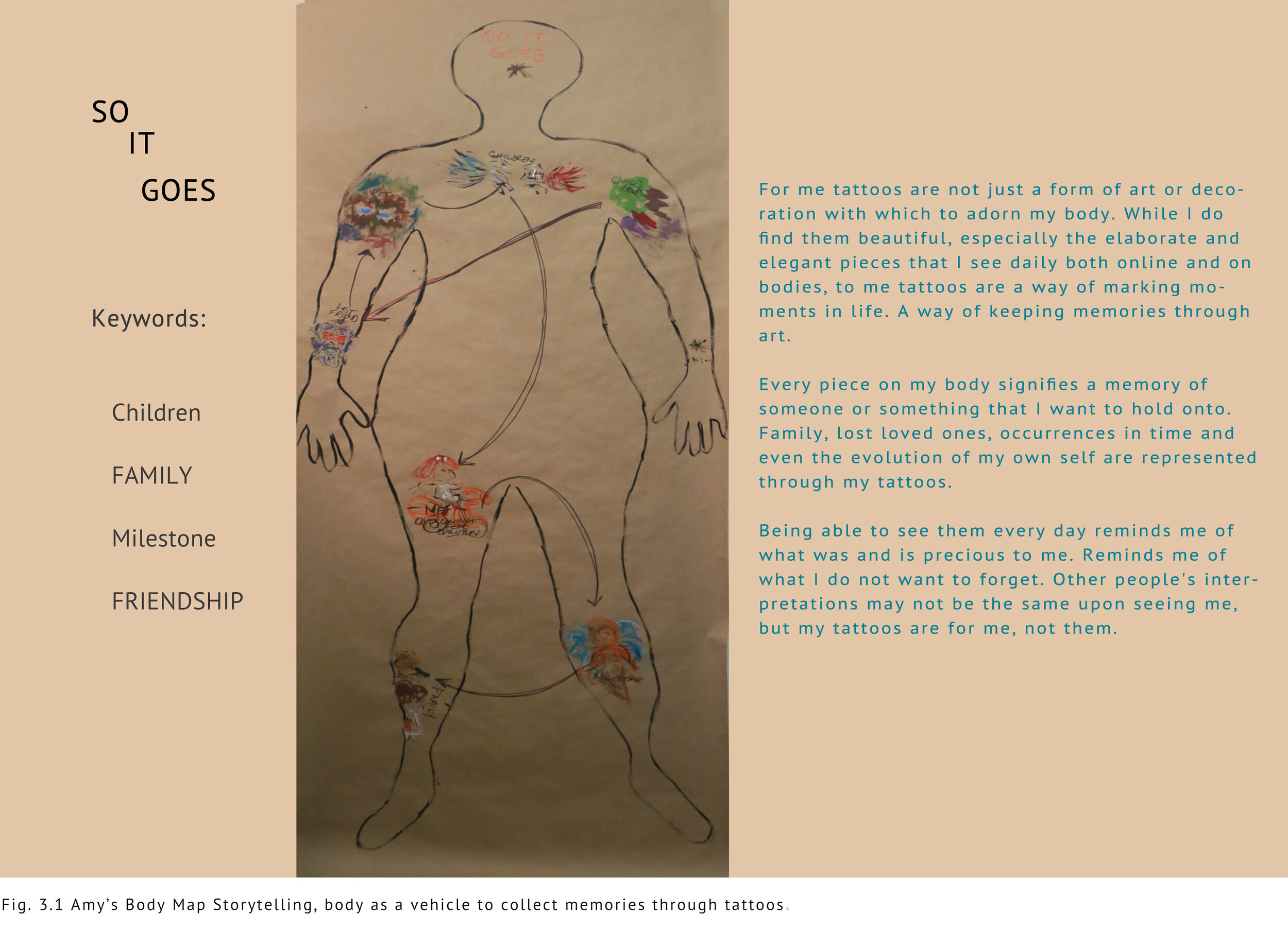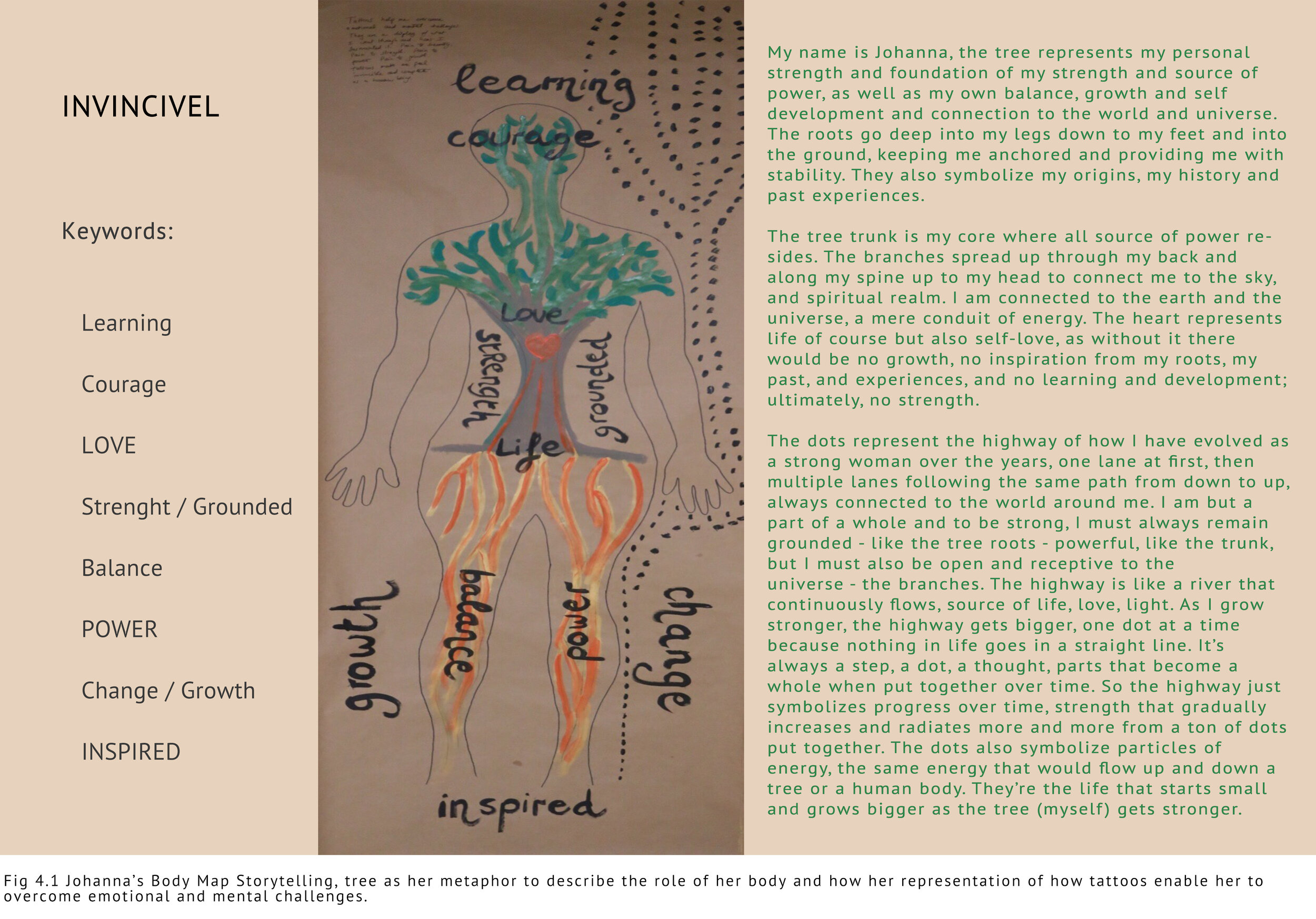Body as a Spatial Metaphor
A Photo Essay about Tattooed Women’s Embodied Experiences
2019
The Embodied space is the location where human experience and
consciousness takes on material and spatial form – Setha M. Low
According to Anthropologist Terrence Turner, “the surface of the body seems everywhere to be treated, not only as the boundary of the individual as a biological and psychological entity but as the frontier of the social self as well.” This project’s aim is to draw attention to women’s embodied experiences through tattoos. Even though, in modern society tattoos are still seen as an act of rebellion or have been characterized as criminal; historically tattooing was considered a method of healing, religious worship, marks of status in society, and even punishment among indigenous tribes. In the Philippines, the women from the “Pintados” tribe believed tattoos increased their beauty and fertility. Thus, from a feminist perspective, tattoos may enable women to challenge the social construction of beauty and allow them to take control over their bodies (Farley, Van Hover, Rademeyer 2014, p.155).
This photo essay explores the role of the human body as a spatial metaphor, as well as, women’s perception of seeing their body as a human canvas for self-expression. This essay’s primary research question seeks to represent through images how tattoos empower women to reclaim their bodies as their own “territory” while allowing them to build a sense of individuality and feel confident in their skin. Furthermore, I draw attention to the idea of interpreting tattoos as a marking that creates an intermediate space, wherein the body is the territory that becomes a medium of communication, and the skin becomes the boundary between the self (individual) and the other (society). By focusing on the concept of embodied space my aim is to ascertain how do tattoos create this “intermediate space” enabling women with new ways of communication and empowerment. The project is composed of 3 elements, a photo series portraying the women’s bodies, slogans and tattoos, a life-size body map, and a brief narration wrote by each participant describing each visual element of their body map.
Keywords: embodied space, territory, body space, women empowerment, tattoos, intermediate space, individuality, identity construction.
For tattooed women their body is a medium of communication and assertion, we imagine ourselves experiencing the world through our “social skin,” the surface of the body representing “a kind of common frontier of society which becomes the symbolic stage upon which the drama of socialization is enacted” (Turner, 1980, p. 112). For Elysia (Fig. 1) tattoos helped her reclaimed possession of her body and overcome traumatic experiences from her past. Her body map (Fig. 1.1) is her self-representation, most concretely concerned with the construction of individuality wherein tattoos are her way to create a deeper bond with her body in a physical and a spiritual realm.
For Brenna (Fig. 2), her body is a space where emotion, intellect, and exploration meet. Drawing attention to Richardson’s phenomenological understanding of being-in-the-world by constructing the person (actor) as a truly embodied space in which the body, conceived of as a moving spatial field, makes its own place in the world (Low, 2003, p. 14). Brenna’s representation of body space might be positing a direct relationship of spatial arrangements and social structure beginning with the symbolism of the body and body boundaries. Similarly, her tattoos enabled her to develop a deeper understanding of life after pain. In fact, she explained that the process of getting tattooed is painful and uncomfortable, yet it encourages her to overcome life difficulties, Thus, her body might be seen as an original tool with which she shapes her world (Mauss, 1950) and transforms experiences to symbols of empowerment.
For Amy (Fig.3) her tattoos are intended to record memories, which do not only enable a form of art or decoration over her body, but they signify a memory of those who are important to her. The way Amy followed her body mapping was by conceiving the body as a subject and an object, which draws attention on Merleau-Ponty's insight wherein he states, "the body is our general medium for having a world" (1962, p. 146). Similarly to Bourdieu's (1977) notion that the body structures both how we act and how we perceive, pointing out to the body as a fundamental aspect of the acting self, thus seeking to transcend the dichotomy of self as subject versus body as object in order to draw attention to the often overlooked role of the body in social action (Reischer and Koo, 2004, p. 307).
For each participant the tattoos acted as anchors to describe individual aspects of their lives, body adornment and empowerment, personalities and a general focus to memory. However, Johanna used a strong specific metaphor to describe her body. She described her tattoos as “points of references for stages in her life where she learned from her mistakes and memorialized a new beginning”. Hence, she chose a tree metaphor, wherein her body takes agency and acts as if it was a tree in order to represent qualities, such as personal strength, source of power, balance, growth and connection. While Johanna’s perception of her body is seen as a symbol of strength, I noticed her body’s perception is heavily rooted in a feminist perspective, which “body ideals serve as mechanisms of social power and control.” (Reischer and Koo, 2004, p. 301).
© 2025 Tatiana Lopez. All rights reserved.Prints and image licensing available upon request.

